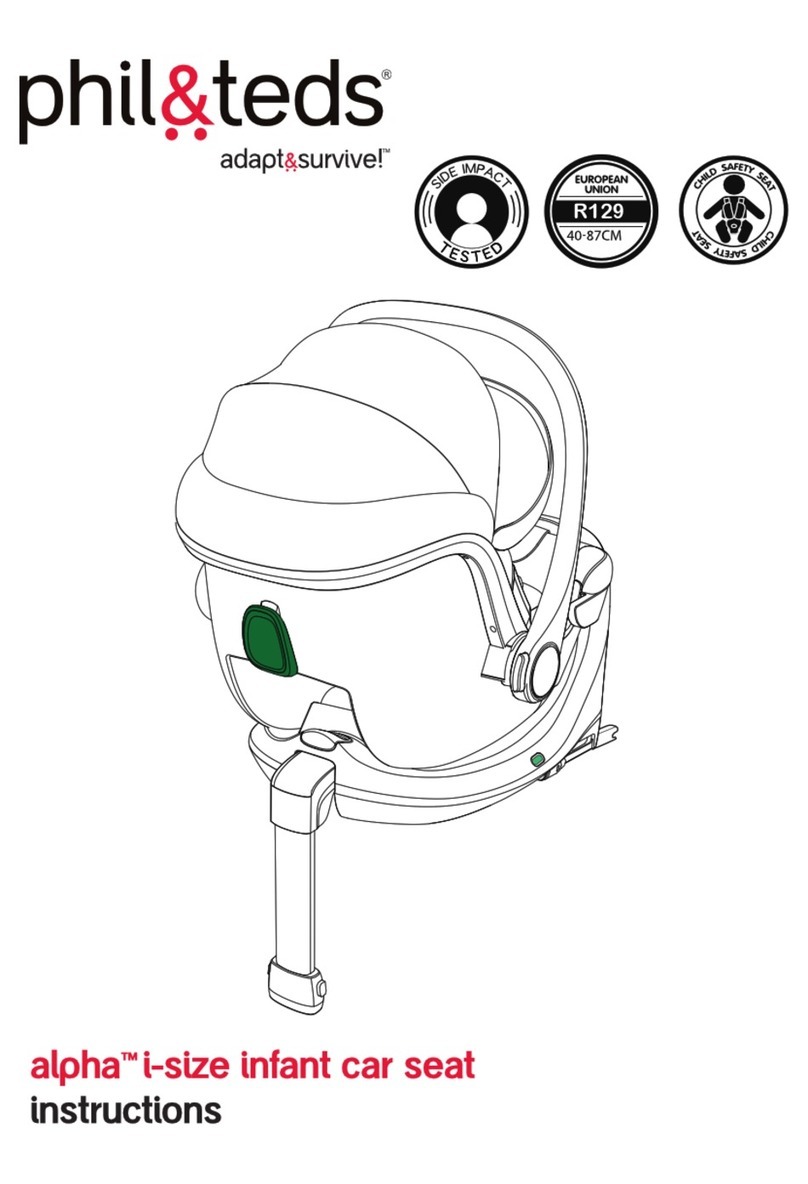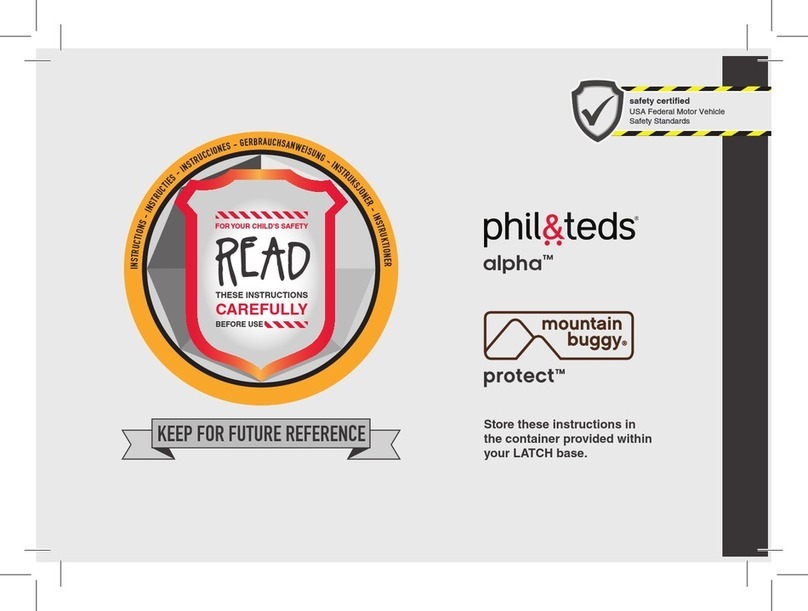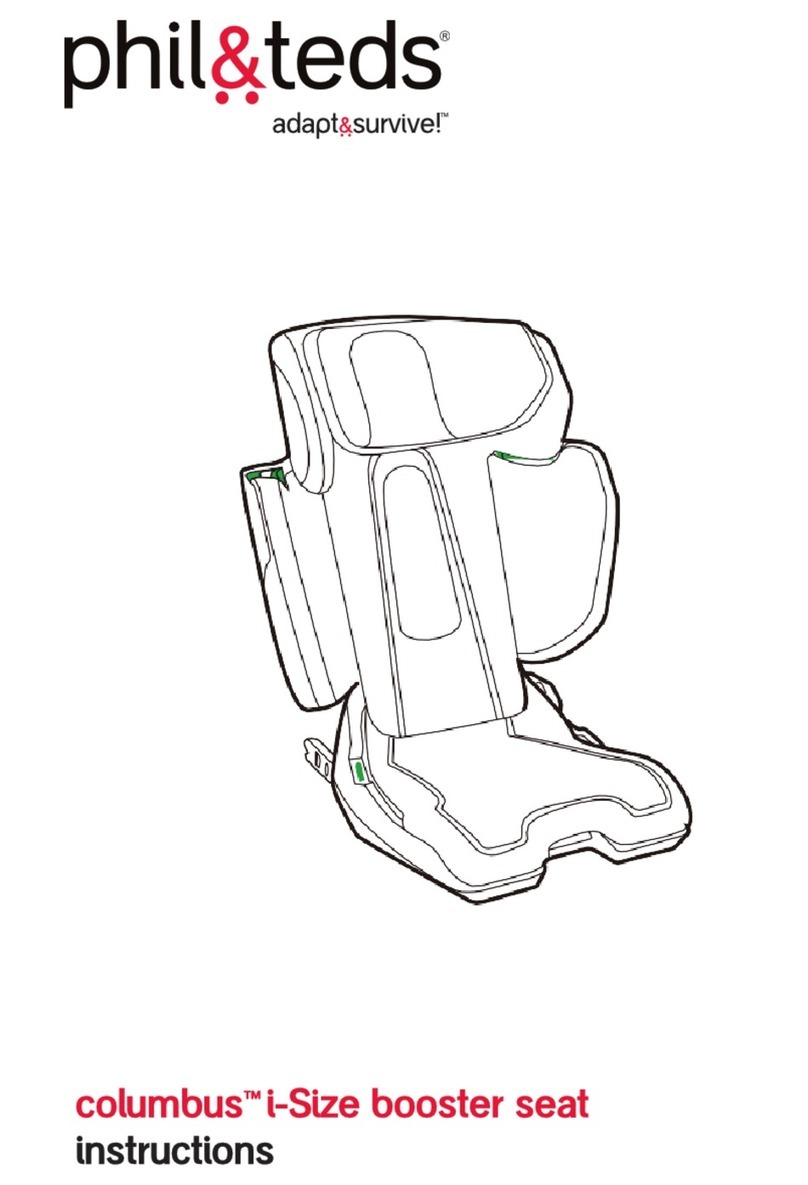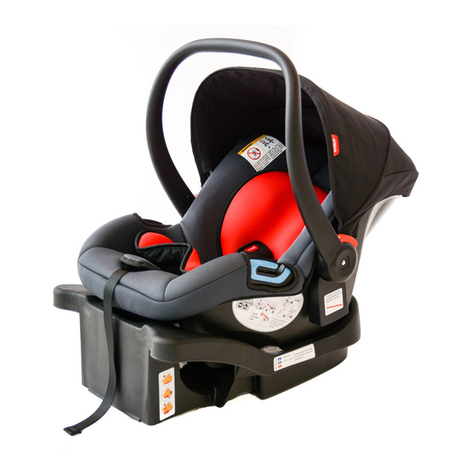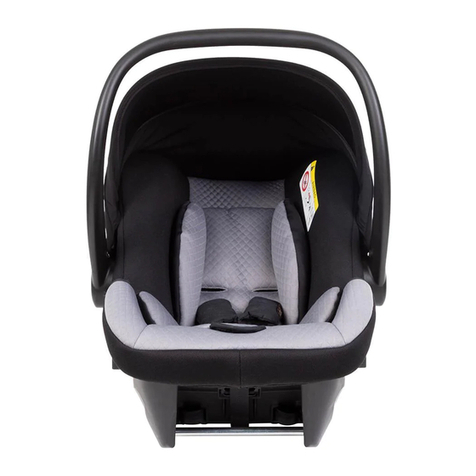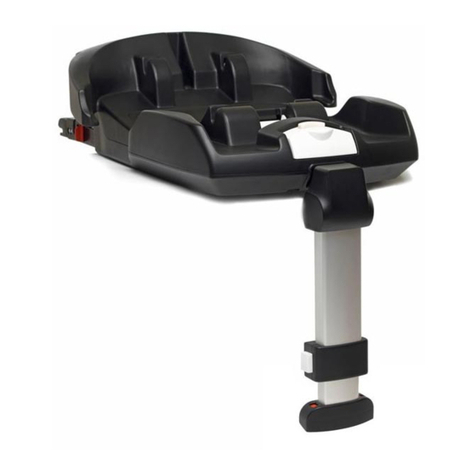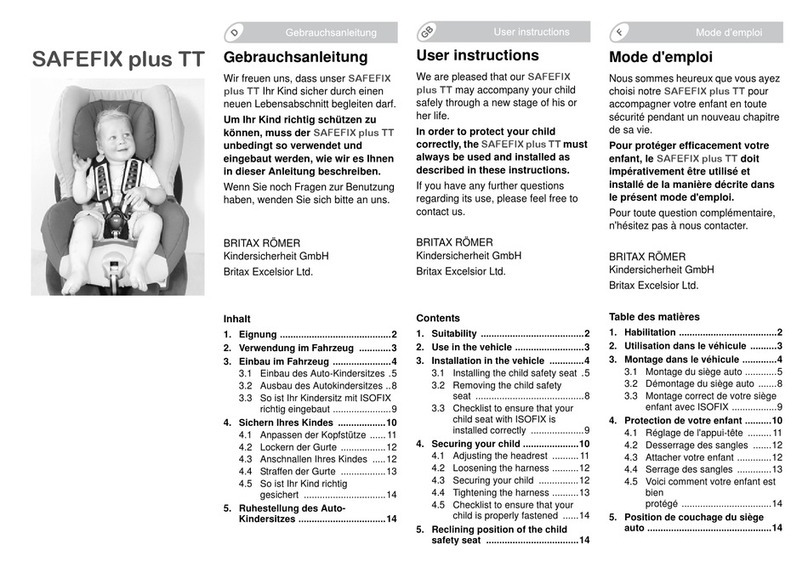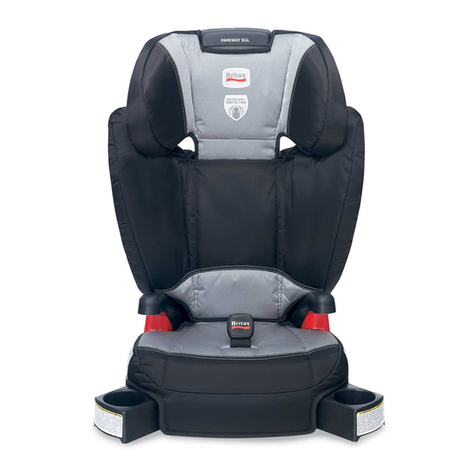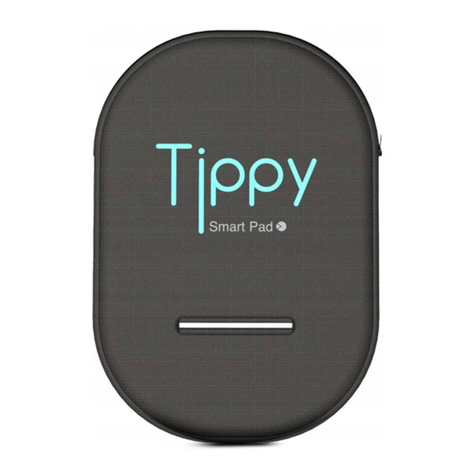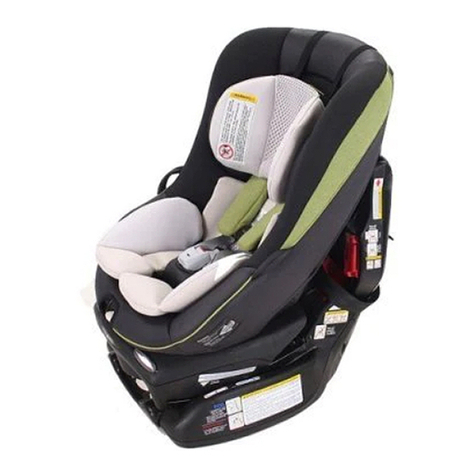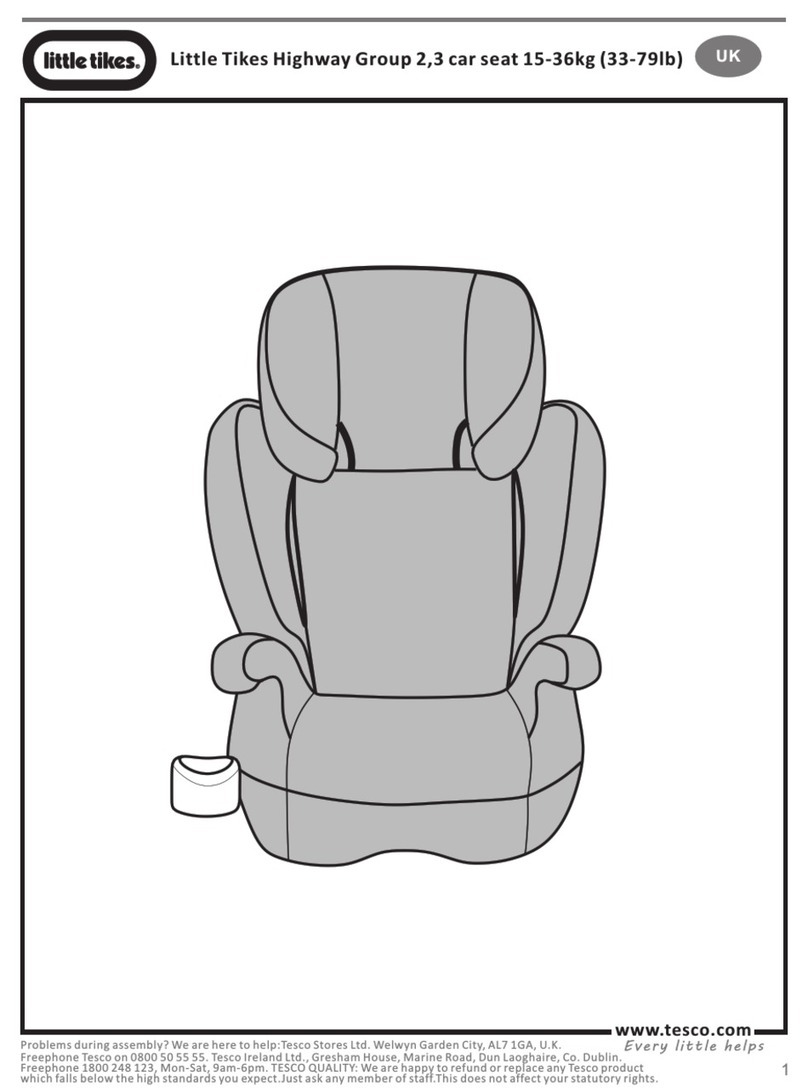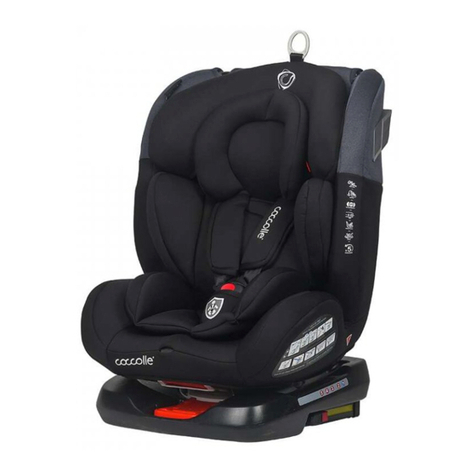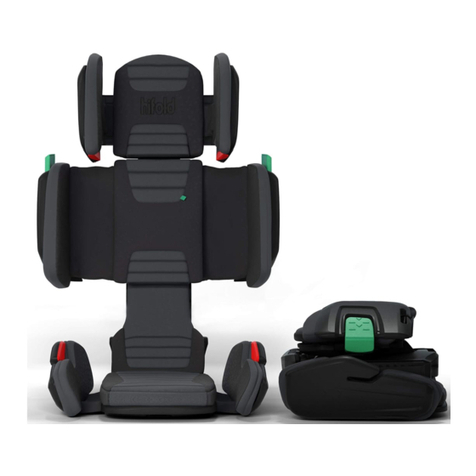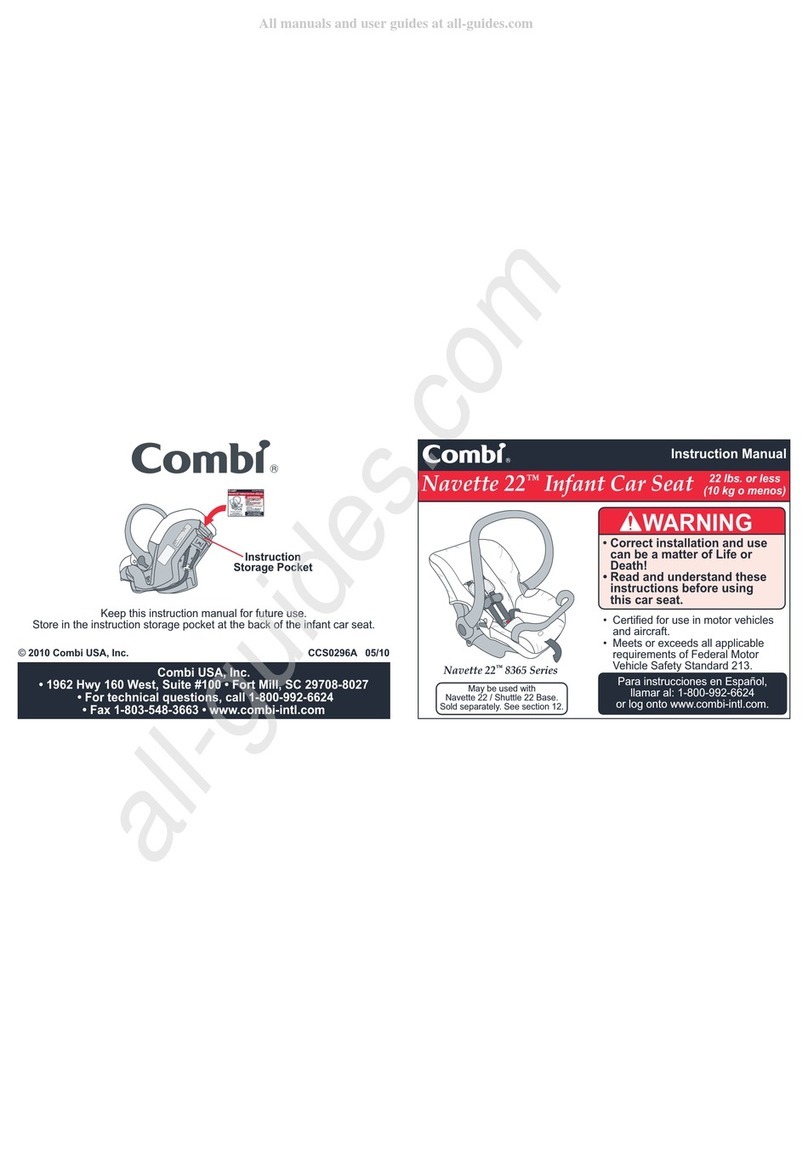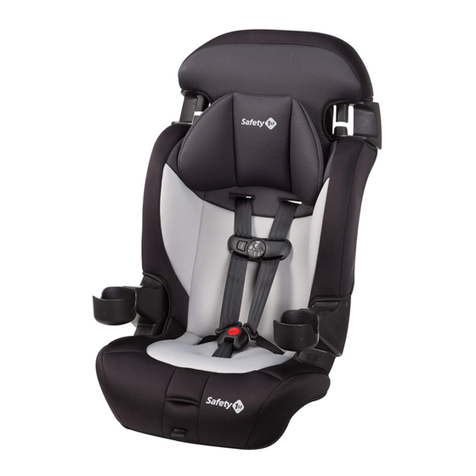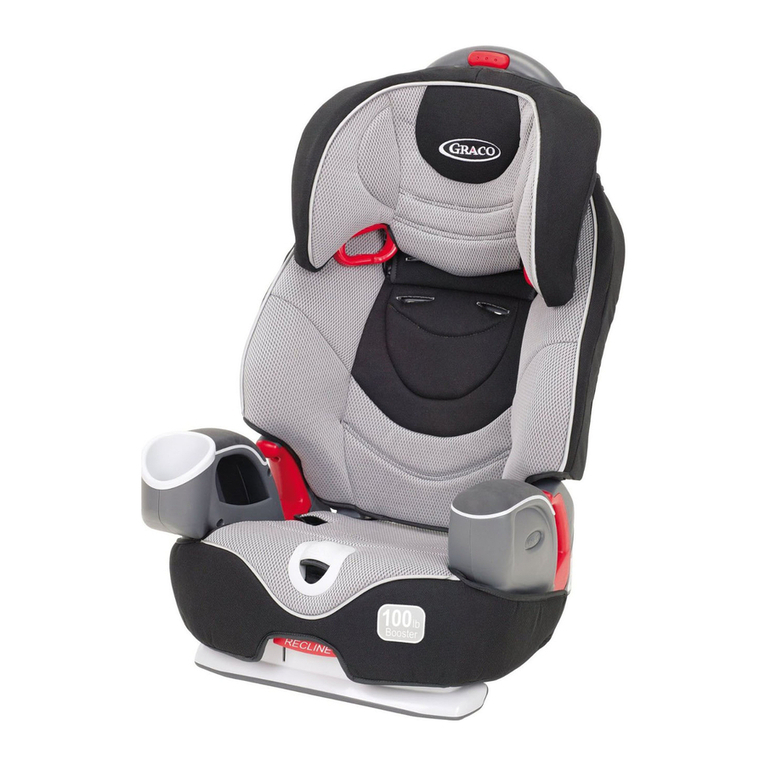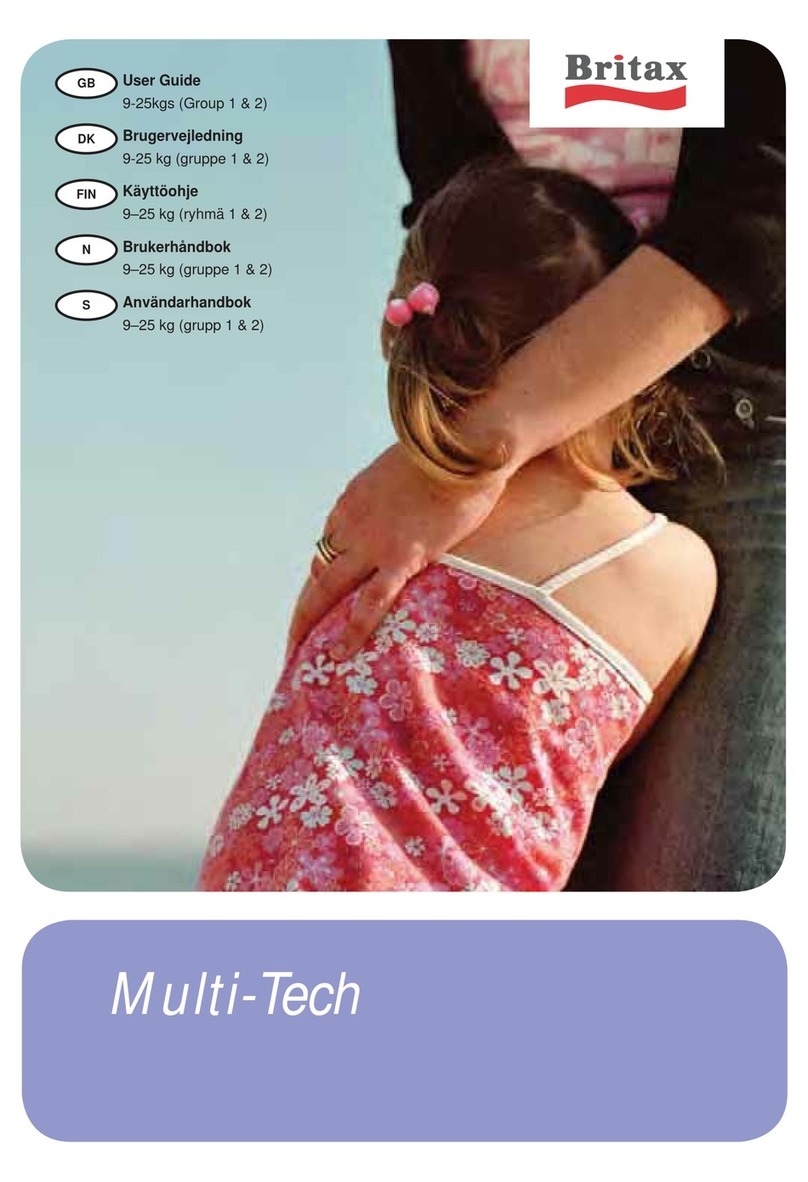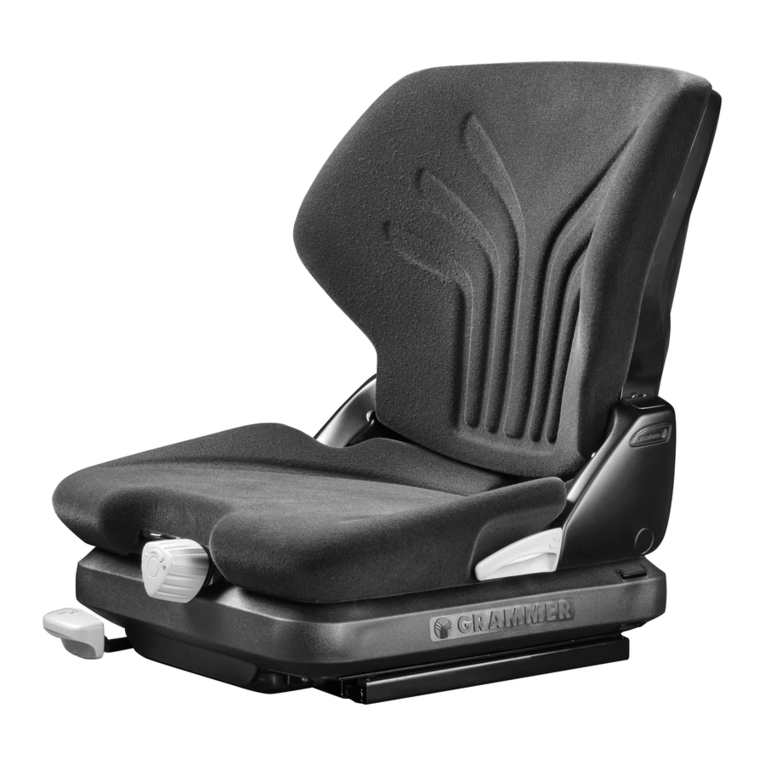
Important /04
It is recommended that the car seat should not
be used more than 5 years from the date of
production. The properties of the products may
deteriorate due to, for example, ageing of the
plastic and this may not be visible.
The moving parts of the car seat should not be
lubricated in any way.
The baby car seat must not be used without the
cover. Please use an original cover, as the cover
contributes to the safety of the seat.
The seat must be secured with a seat belt, even
when not in use. An unsecured seat may injure
other passengers in the car in an urgent stop.
Ensure that the seat is not damaged by the
webbing between or underneath heavy luggage,
adjustable seats or slamming the car door etc.
No alterations may be made to the product as this
could affect part or the overall safety of the seat.
In hot weather the plastic and metal parts of the
product will be hot. You should cover the seat
when the car parked under the sun. In order to
prevent damage to the cover, do not remove the
product’s logo.
Use the seat even in a short journey, as this is
when most accidents occur.
Before the purchase, please check that the seat is
properly in your car.
Take a short break in long journey. So that your
child has some time for relaxation.
Set a good example yourself and always wear
your seat belt. Tell your child that he/she should
be never play with the belt buckle.
Questions
Contact your supplier or importer if you wish
to make a warranty claim or have any other
questions.
The seat belt
The product should be used with an automatic
3-point safety belt provided that this has been
approved according to ECE R16 or an equivalent
standard. Under no circumstances should an
automatic 2-point safety belt be used.
Your car seat can be fixed safely on almost seats
of the cars. However, on some seats the belts are
fixed so that proper installation is not possible.
If this is the case, try another seat.
